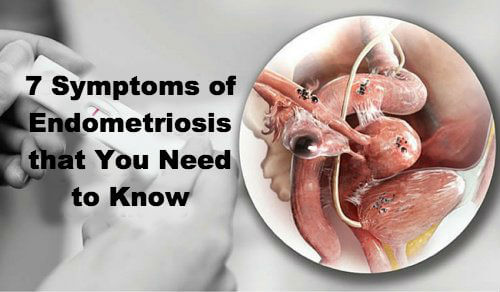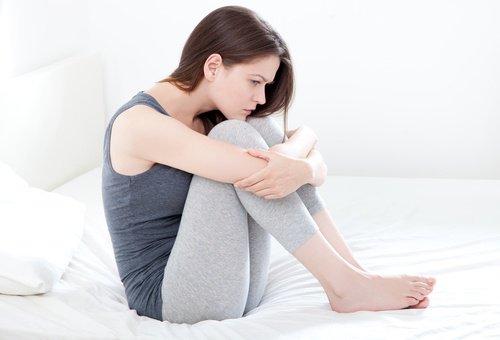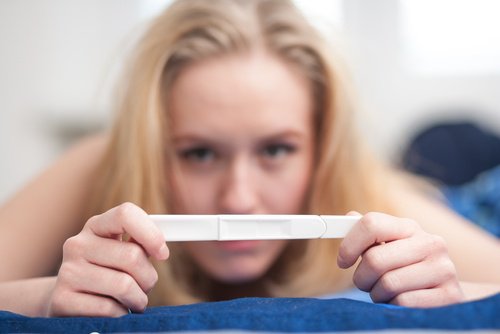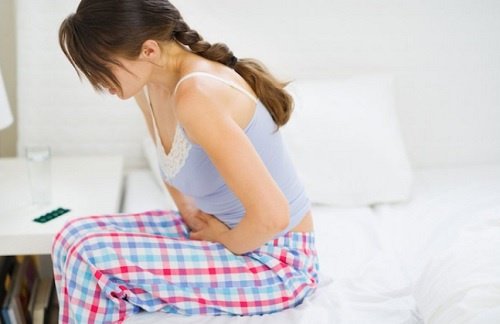6 Endometriosis Symptoms that You Need to Know


Reviewed and approved by the doctor Nelton Abdon Ramos Rojas
Do you know about endometriosis symptoms? Endometriosis occurs in women who are of childbearing age and can even manifest after a girl has her first period. The most severe symptoms appear between the ages of 25 and 35. This disease has no definitive cure, but there are certain treatments that can improve your quality of life.
Physical exercise and keeping a healthy diet are essential to ensuring that any medical procedures are effective.
Aside from the growth and development of endometrial tissue in the female reproductive tract and the surrounding areas, endometriosis has other symptoms that may indicate it’s time to visit your gynecologist.
6 Endometriosis Symptoms
1. Very painful periods

In many cases, menstrual cramping that’s stronger than normal is one of the first endometriosis symptoms.
You might recall that this disease comes from the presence of cells that make up the inner layer of the uterine lining, or the endometrium. With endometriosis, these cells can also be found outside of the uterus and near the ovaries, bladder, or intestine.
When you have your period and shed the lining of your uterus, your body expels it vaginally. Women who have endometriosis experience bleeding and inflammation anywhere endometrial cells are found, causing even more pain.
Sometimes, the pain may have no apparent cause. You probably already know that menstrual pain is a fact of life for most of us. Nevertheless, be aware if you go through a period that’s more painful than normal.
Describe your symptoms to your gynecologist to analyze the causes and look for the best treatment.
Do you want to know more? See:
Natural Relief for Endometriosis
2. Pain during intercourse

Endometriosis can affect various organs in the pelvic region. That’s why any sexual contact with an inflamed area will cause pain. Unfortunately, few women are aware of this symptom and may instead fear there’s something else wrong with them when they feel this pain.
Always try to remember that sex should only cause you pleasure – never pain. If you feel pain, it’s because something isn’t right. Very few women manage to attribute this symptom to endometriosis.
How can you know if it’s truly related to this disease? How do you know if your discomfort isn’t normal?
Some of the characteristics of pain from endometriosis are:
- Cyclical pain
- The pain is strong intensity
- It progressively increases
- It’s similar to the pain you feel during your period
- There is little improvement with common painkillers
3. Infertility

Another endometriosis symptom is difficulty becoming pregnant. Many women who are infertile later find out that they have endometriosis.
This relationship comes from the obstruction that endometrial tissue outside the uterus creates.
Chronic inflammation of the pelvis can prevent the embryo from implanting in the uterus. Fortunately, if this is the cause of your infertility, you can restore it with proper treatment.
You’ll need patience and a good amount of control. Make sure to see your gynecologist and follow all the instructions they give you regarding medication and timing.
4. Intestinal problems and pain during your period

Due to the location of your intestines in the region of your pelvis, they’re often affected by endometriosis.
During your period, the endometrial lesions on your intestines can cause inflammation and pain, as well as the following associated symptoms:
- Gas
- Bloating
- Very strong cramping
- Bloody stools
- In severe cases, intestinal obstruction
If you notice any of these symptoms, see a doctor immediately. They will evaluate some potential problems and refer you to the correct specialist.
5. Painful urination

Just like your intestines, your bladder is also found in the region that’s affected by endometriosis. Thus, you may experience some of the following symptoms when you have your period. You may notice more pain when you urinate or even find blood in your urine.
In severe cases, endometriosis can compromise your ureters, the tubes that carry urine from your kidneys to your bladder, and it may even affect your kidneys, as well.
6. Chronic pelvic pain

As we explained in the beginning, the symptoms of endometriosis may involve several organs in the pelvic region and develop over the course of many years. As time goes by, you may begin to experience continuous pain, not just when you have your period.
This condition is known as chronic pelvic pain, and it can have a serious impact on the quality of life of the sufferer, as it interferes with their professional, personal, and sexual lives.
Don’t forget to read:
Bleeding Between Periods: What Should You Know?
Pay attention to endometriosis symptoms
Finally, don’t leave until tomorrow what you can get done today. If you notice any of these symptoms, trust your instincts and seek treatment.
If you wait too long, you might find that it interferes with your day-to-day activities.
In addition to that, your future health could be compromised if you don’t listen to what your body is trying to tell you. Don’t settle for just treating the initial pain and discomfort.
It’s best to attack the real problem from the start and prevent it from worsening.
All cited sources were thoroughly reviewed by our team to ensure their quality, reliability, currency, and validity. The bibliography of this article was considered reliable and of academic or scientific accuracy.
- Bulun, S. E. (2018). Endometriosis. In Yen & Jaffe’s Reproductive Endocrinology: Physiology, Pathophysiology, and Clinical Management: Eighth Edition. https://doi.org/10.1016/B978-0-323-47912-7.00025-1
- Burney, R. O., & Giudice, L. C. (2012). Pathogenesis and pathophysiology of endometriosis. Fertility and Sterility. https://doi.org/10.1016/j.fertnstert.2012.06.029
- Mangtani, P., & Booth, M. (1993). Epidemiology of endometriosis. Journal of Epidemiology and Community Health. https://doi.org/10.1136/jech.47.2.84
This text is provided for informational purposes only and does not replace consultation with a professional. If in doubt, consult your specialist.








